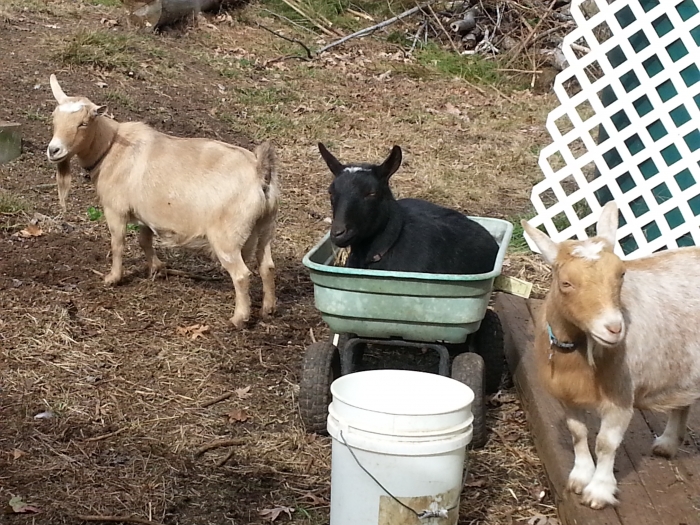
First off, before I can do anything with the milk, I have to cool it down. Once the milkman, my hubby, finishes the milking of the goats, he brings the milk in and gives it to me. Yay, me! (Not really) We use stainless steel bowls with snap on lids; both for sanitary and cooling reasons. I place the milked-milk (what? it could be a thing) in the fridge and cool it down to 48 degrees within 30 minutes, which ultimately results in the milk being 40 degrees after about an hour and a half. The milk is now ready for use. And yes, if you’re asking, we drink and consume raw milk.
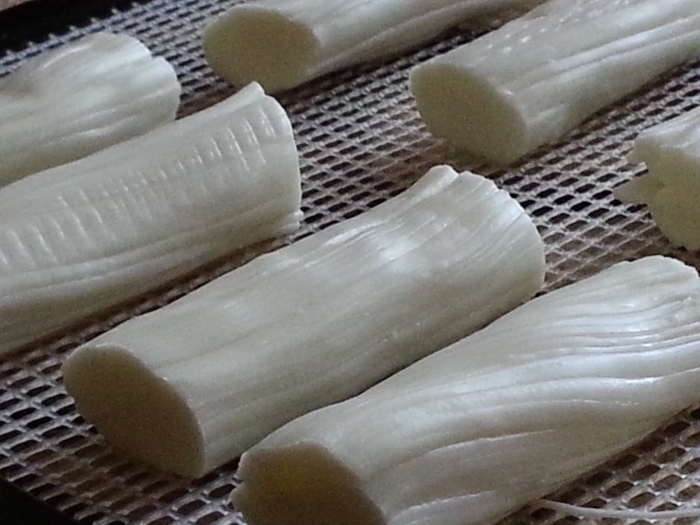 Before getting into what I do with all this raw milk, let me share the benefits of goat milk. Goat’s milk is a rich source of proteins, vitamins, and minerals and actually has a better digestibility and lower allergenicity than cow’s milk, which is good news for some of you lactose intolerant peeps. My father-in-law who is lactose intolerant, loves coming to visit us because he can enjoy some of the goodies like ice-cream, cheesecake and mozzarella cheese topped pizza that he wouldn’t normally get to have, which makes me the best daughter-in-law in the world. (Well, yeah?! Just sayin)
Before getting into what I do with all this raw milk, let me share the benefits of goat milk. Goat’s milk is a rich source of proteins, vitamins, and minerals and actually has a better digestibility and lower allergenicity than cow’s milk, which is good news for some of you lactose intolerant peeps. My father-in-law who is lactose intolerant, loves coming to visit us because he can enjoy some of the goodies like ice-cream, cheesecake and mozzarella cheese topped pizza that he wouldn’t normally get to have, which makes me the best daughter-in-law in the world. (Well, yeah?! Just sayin)Okay, back to moving the cheese. Now I come to the creativity part on what to do with the raw milk. I do not have the space for gallons and gallons of jars filled with milk in my fridge. And because there are no preservatives in the milk, it has to be used in short-order. So, first and foremost, is always cheese. Mostly soft cheeses like mozzarella because it is fast and easy to make. I put cheese in the dogs’ food, shred it for food toppings and, for snacks; like yummy string cheese. Then, next is soft cream cheese that we can use for dips, veggie and herb spreads, cream pies, or creamy cheesecakes. And then there’s the yogurt. If you didn’t know, goat milk yogurt is high in probiotics like thermophillus, bifudus, and bulgaricus (I know that’s a bunch of big words that probably none of us understand, but what they mean are that the goat milk yogurt is packed with a lot of healthy probiotics.) In fact, both my hubby and I have a bowl of goat milk yogurt topped with fruits or preserves from our garden, and a little raw honey (thank you bees) every night before bed.
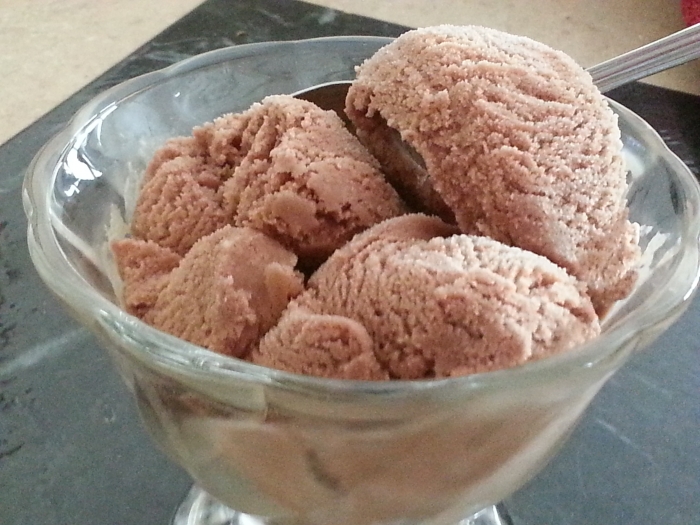
And the best thing, and favorite with friends and family, and yeah the ol’ goat himself, I make goat milk ice-cream. Rich, creamy, melt-in your-mouth ice-cream. Again, I add goodies from the garden to make the ice cream.
If I’m really feeling adventurous, and have a little time on my hands (Time? What is that?), I will make hard cheese, like mild cheddar. But of course this means, pulling out the cheese press that my hubby made me (saving us a couple hundred dollars that we didn’t have in the first place), and taking up a lot of counter space for a few days for squishing the whey out of the cheese, and drying it on racks, before sealing for storage. So I only make hard cheese on my downtime like in the winter, where there is no harvest to preserve. Hard cheese doesn’t need a lot of babysitting either, after the initial pressing and flipping that is.
With all that cheese whey, I feed it to my dogs, chickens and ducks, sprinkle it in my greenhouse, and make some really yummy protein bars. Nothing goes to waste here on our homestead!
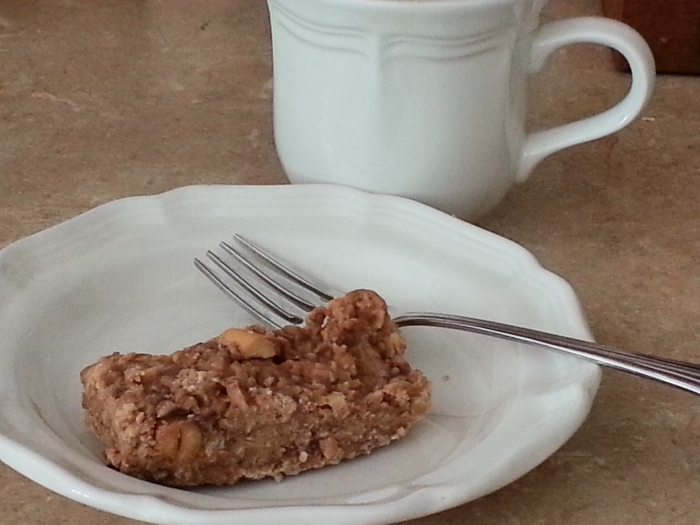 There you have it, how I “move” the milk. Although it all seems fairly easy enough with just the two of us, if you combine the cheese making task with all the outdoor, and indoor chores, and preserving of the garden harvest, I have been known to whine a little bit, okay, I whine a lot bit, when I see my hubby coming in the door with a gallon and a half of milk and two five-gallon buckets filled with garden harvests for me to “deal with”. Just sayin.
There you have it, how I “move” the milk. Although it all seems fairly easy enough with just the two of us, if you combine the cheese making task with all the outdoor, and indoor chores, and preserving of the garden harvest, I have been known to whine a little bit, okay, I whine a lot bit, when I see my hubby coming in the door with a gallon and a half of milk and two five-gallon buckets filled with garden harvests for me to “deal with”. Just sayin. - Survivor Jane

For More Information and Tickets for "Prepper Camp" - the largest 3 day outdoor preparedness event in the country go to www.PrepperCamp.com
If you liked this ... then you will love my book, "Emergency/Survival Hygiene: A Prepper "Cookbook" for Survival Personal Hygiene Products", "What Could Possibly Go Wrong??? How to Go From Completely Clueless to Totally Prepared" and my NEW Book "Puzzling Over Preparedness - Survivor Jane's
Prepper Word Search Puzzles" (Direct links to all my books on the side bar >>>)
If you have any questions, or would like to see a specific article addressing survival preparedness for women on Survivor Jane website click here > editorial@survivorjane.com)
Follow me on all my social networks too! (Direct links on side bar >>)
And don't forget to use the hashtag #PrepperTalk - Building the Largest Prepper Community One Social Media at a Time!
I was thinking the other day about how people would bake bread if they were "on the move' and didn't have access to a loaf of bread or even a piece of bread for that matter.
Well this got the better of me and I began to do a little research.
What I came up with is hard bread, also known as 'hardtack'. 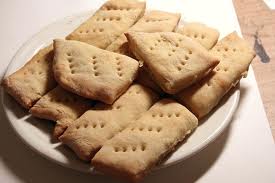
Yes hardtack, not that break-your-teeth-surgery-sweet candy that comes all stuck together in the brightly colored Christmas tin, but a floury biscuit of sorts.
Seems the concept of hardtack dates back to Egyptian times (maybe even earlier), and later was used on long sea voyages, for the military, eaten by explorers, prospectors, and pioneers. Of course the name has changed down through the years but its basically the same.
Now, its not really a bread as much as it is a cracker. And, from what I have read no wonder we slather anything and everything on our crackers of today - this custom must have originated from the use of hardtack.
I have to say after investigating this a little morsel, it sounds like it was more of "something to put in your stomach" than a delicacy . It was thought that because most medical issues were associated with digestion, hardtack was not only good for sustenance sake but to avoid illness as well.
It was idea for nutrition, easily portable due to its light weight and had a long shelf life. Case in point, after the Civil War, hardtack was stored and the surplus used during the Spanish American war 35 years later! Yummy!
The surprising thing is, hardtack is still made today, and in fact, Alaskans still eat it as part of their normal diet with melted butter, soup or moose stew (get used to it ladies - it may be possum or even rabbit stew for us!)
Hardtack is a significant energy food, with one 24 gram cracker containing 100 calories (20 percent from fat), 2 grams of protein and practically no fiber. Add a little peanut butter, honey or topping of availability and you've got a survival meal!
Here's the good news. You can make hardtack yourself at home and begin storing it. It's just made of flour and water! That is the novelty of this cracker. And, if kept dry, you can take it wherever because, like we've said, its light-weight and endures extreme of temperatures.
Here is a recipe I found to make hardtack, but there are any number of recipes you can find online to your liking:
6 parts flour to 1 part water.
Do not but any shortening or oil on your hands.
Knead dough until thoroughly mixed.
Roll out on a floured surface until about 1/8 inch thick (or there about).
Cut to squares or rectangles depending on your preference (say the size of a saltine or gram cracker example: 3 x 4 inches).
Make little holes in the hardtack like you see on crackers of today with a tined fork making sure the holes goes all the way through the dough.
Bake the hardtack at 325 for at least an hour, turning over once making sure it is cooked through completely.
Take out & let cool overnight (to get that real hard & dry feeling)
The hardtack will still look pale when its done.
Note: Some people bake their hardtack at 300 for a couple of hours, just to get it real dry.
Now keep in mind hardtack got its name honesty. This stuff is hard. To eat it you will need to dunk it in your beverage of choice, crumbled it into a soup or stew, or top it with a jelly, peanut butter, butter or other soft topping.
Polly wanna cracker (sorry couldn't resist!)
- Survivor Jane

Thank you in advance for sharing Survivor Jane with your friends!
If you have any questions, or would like to see a specific article addressing survival preparedness for women on SurvivorJane.com click here
Or contact Survivor Jane at editorial@survivorjane.com
Follow me on Twitter @SurvivorJane and use the hashtag #PrepperTalk where you will find the Largest Prepper Community on Twitter!

Have you ever gotten those jars with cocoa mixes or cookie mixes in them from someone at the holidays or for a gift? I have, lots of times. And more often than not, the jar sits on the counter for a while; mostly because it look really cool all sectioned off like sand art and I don’t want to destroyed the pretty presentation, and then up it goes in my cabinet – who doesn’t admire artsy-crafty people right?
But this year was different. I got a jar of a different color. It was a soup mix. Food – not treats??! What’s up with that? I wasn’t quite sure about this. I mean I’ve always considered the cocoa or cookie mixes as an “in case of emergency break open” sort of thing. Who wants soup in an emergency?
So, I began analyzing what the heck was actually in this jar of soup, looking at it like a specimen in a Petri dish under a microscope.
Chicken and rice soup. Okay. Wild rice, minced onion, vegetable flakes, chicken bouillon granules, thyme leaves, minced garlic, dried marjoram, lemon pepper, brown rice, bay leaf.
Hummmmm. I began to see a pattern here.
Everything was dry! Bear with me I’m little slow with these things!
The directions said all I had to do was add water.
Hmmmm. Just add water? Eureka! It dawned on me. This, sweet ladies, is survivor food! All in one beautiful presentation!!
What a gift huh? Well the idea is.
So I began hunting other ‘jar’ recipes and found there hundreds of them out there.
By taking these ingredients and putting them together then putting them in food saver bags you could have ready made meals – and sister these are meals too.
As I looked at the many recipes out there I note that some of these call for a meat and pasta sauce. BUT! If you dehydrate a can of white chicken or tuna and your pasta sauce before hand and add to these to the ingredients … voila! There’s your meal with meat and sauce!
Funny, I’d beat that whoever thought of these jar-gift probably had no idea they were actually creating a gift that was far greater than fresh cookies and hot cocoa to enjoy!! They were making meals that could be stored and used in time of an emergency too.
You can make anything from drinks, snacks, breakfast to dinner and desserts with these recipes. Doesn’t get any better than that does it?
Picture this. It’s just you and your little sterno grill all alone. You’re hungry. While everyone else is eating peanut butter and bread you are eating a yummy meal of spaghetti and meat sauce, or even a great tuna casserole. Now that is surviving!
These meals can be used is the most dire of times or even when practicing your survival hikes. Take a few packages of these “gifts” along with you and eat like you were sitting at your table at home.
Now pull up a chair and let’s eat!
- Survivor Jane

Thank you in advance for sharing Survivor Jane with your friends!
If you have any questions, or would like to see a specific article addressing survival preparedness for women on SurvivorJane.com click here
Or contact Survivor Jane at editorial@survivorjane.com
Follow me on Twitter @SurvivorJane and use the hashtag #PrepperTalk where you will find the Largest Prepper Community on Twitter!
Go to the pantry, open the door and look in.
What do you see?
A box of Cheerios, a couple boxes of mac and cheese? Some rice? Two or three cans of tuna and a jar of peanut butter?
Girly girl, if a disaster were to strike at this very moment, do you have enough food to survive with what is on-hand? And if so, for how long?
Think of this. If you could never buy groceries again, ever (well - in the traditional since that is), how would you survive?
How many times have we roamed around the kitchen moaning “there’s nothing here to eat” when in reality, there’s plenty. We’ve just grown complacent and are too darn lazy to cook, prepare or eat whatever is in our cupboards. Right?
Let me share this little known fact about how food gets to our grocery store – maybe this will be an eye-opener and you will be more appreciative of that can of tuna.
I’ll try not to get too detaily – because to tell you the truth - this is a little mind boggling for me too.
Our food distribution system or the system that gets the food that we buy to the shelves of our grocery store - is like a linked chain. It’s made up of suppliers working with distributors that send food to the retailers, which in turn is placed on the shelves for us to buy.
I know it’s a little technical, but if you put it to the song, Dry Bones - you know “the leg bone is connected to the hip bone” … it would go like this:
la la …’the supplier is connected to the distributor, the distributor is connected to the retailer, the retailer is connected to store, and the food goes on the shelf’ la la.
Okay, so maybe that didn’t work out so well - but you get the gist – each link of the chain has a job to do.
Now throw this little tid-bit into the equation. The whole chain system is connected by computers!
So … if this system crashes, or a disaster totally wiped out the computer system - everything would just stop.
And the everything in this situation would mean, E-V-E-R-Y-T-H-I-N-G.
Without the computers telling each chain link that it is time to replenish the shelves – this information would not get to the suppliers, distributors, retailers, or shelves.
Wal-Mart for example, has a computer system that identifies each item that we buy and uses this information to reorder inventory. So, again if the “reordering” link can’t get to the supplier and distributor links – there is no food to be delivered to the stores
As a rule, most stores have about a three day supply of food on their shelves. I would venture to guess that this would be wiped out in a matter of hours in a disaster or major catastrophe. Ya think??
So what can we do?
Well I would suggest, if you haven’t already, begin storing as much food and water as possible (remember to use a rotation system to prevent any food spoilage – first in first out.)
No one knows how long it will take for a disaster or catastrophe to right itself – if ever, so always prepared for the worst.
- Survivor Jane

Thank you for sharing Survivor Jane with your friends!
Follow me on Twitter @SurvivorJane creator of #PrepperTalk the Largest Prepper Community on Twitter!
For more information on Survivor Jane recommended products and services click on Survival Products above.
If you have any questions, or would like to see a specific article addressing survival preparedness for women on SurvivorJane.com click here
Okay this topic was a little hard for me. I’m a milk drinker – remember ‘milk builds strong teeth and bones’ and ‘does the body good’ kinda milk? And, well the I thought of 'what would I do about milk if I could no longer buy it' or in my world as I knew it, it was no more'?
So the more I thought about it the more it seemed the logical answer. A cow. I would get myself a cow. And just as sudden as the answer came - it went. 
I recalled seeing a cow up close and personal at a fair. Those things are huge! (how the heck would you even "tip" a thing like that (cow tipping)? And then ... there's the issue of their excrement. That is huge too!. And to make those large ... patties, a lot of food would have to go into them to make such large … eh poop.
What now I thought? I have no farming experience. So I started digging into alternatives. And what I found was amazing.
Goats!
You know like The Billy Goats Gruff?
And there are hundreds of different kinds.
Goats, are smaller than cows (duh!) so they eat far less and require far less space too. And better yet, they poop pellets not pies or patties! And….on average a dairy goat will produce about two quarts to a gallon of milk per day.
Yep, I said a day!
The hard part will probably be picking a dairy goat.
For me, I fell in love with the Nigerian Dwarfs (no not African little people). They are cute as a button little goats and well, small so they are easier to fence and eat a whole lot less then their bigger cousins. Here's are some of our babies playing.
Depending on your circumstances, other than the Nigerian Dwarfs, you may also want to look into the Saanens, Toggenburgs, Alpines or Nubians. Each has different characteristics that may better suit your situation (oh and you may want to check with your landlord or city ordinance too.)
 Now where would one buy a dairy goat?
Now where would one buy a dairy goat?
Well I went to a goat festival! I know, but it was kinda fun. People had their goats on leashes (like you would a domestic pet) and dressed them up in funny hats and costumes. They were absolutely adorable! I couldn’t believe how much personality and intelligence they have!
Oh, and there was even a goat parade (which I must say, with the exception of the goat cheese, goat ice cream and goat milk tastings; that was the highlight of my day!)
The festival for me was the best way to see what a goat looked like up close and personal, and what goat would best suit my needs. Nigerian Dwarfs are small so they actually looked a lot like some of the other goats’ “babies”.
As I understand it, the rule of thumb is, you buy at least two goats (better if they have spent time with each other) because just like us, they need companionship to thrive.
There are certain other things you need to focus on too when looking for a good dairy goat. Make sure they are not sick. The does’ eyes should be bright and clear.
Also you want a shiny coat. As for her female parts (her udder – the milk sack) should be large with two large nipples (sounds like a guy’s writing this doesn’t it? *grin*) Oh and the legs should be straight and her tail in the air.
Remember how I said they thrive on companionship? Well they attached themselves to their owners too at times. So if they are used to being around a man before you get her, you may have to gain her trust, and vise versa.
As for cost? Well goats, depending on what breed you get can go for anywhere from $40 to $300 per goat.
Now there is no way I can discuss everything here about goats (because I couldn’t), but this is merely to show you that you do have options in a “world as we once knew it” scenario.
The main point here is the milk!
Now there are some down sides to dairy goats. For one, you have to milk them twice a day - every day – that’s every 12 hours. But we are talking milk here, so make a fun routine out of it – you know like once in the morning and once in the evening. Remember, we are talking about rich good milk here! 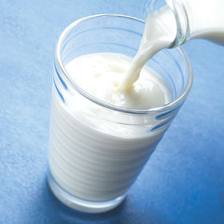
Now, taste. We are used to store bought milk so you may have to ‘doctor’ the goat mile up a little. I have heard of people adding honey or vanilla to it. But you can be adventurous and add just about anything to it.
Don’t lose sight that milk is used for all types of recopies (like breads and cookies!) And you can make ice cream, yogurt and other goodies. It can be usable warm or cool.
If you are considering (I’m not there yet) goats for meat, needless to say you will need a male (buck). And, like some guys I’ve known in the past, they can be a little hard to handle – and for attention they will do some pretty disgusting things. Typical. Just sayin’.
The babies are called kids and are even cuter than their mommas when born. Just be warned that the gestation of a goat is five month and as an added bonus they usually bestow you with multiple births not just one. So you could have a large herd in short order.
Now because I am not the goat expert (or any expert for that matter), there are lots of books and literature out there to research more on the topic. But for me, I’d suggest actually talking to someone who has goats and go see them ‘in action’ (the goats not the owners, and playing not the other thing, geeze).
Now Goat to it!
- Survivor Jane

Thank you for sharing Survivor Jane with all of your friends!
If you liked this ... then you will love my book, "Emergency/Survival Hygiene: A Prepper "Cookbook" for Survival Personal Hygiene Products", "What Could Possibly Go Wrong??? How to Go From Completely Clueless to Totally Prepared" and my NEW Book "Puzzling Over Preparedness - Survivor Jane's Prepper Word Search Puzzles"
If you have any questions, or would like to see a specific article addressing survival preparedness for women on Survivor Jane website click here > editorial@survivorjane.com)
For Sponsorship/Advertising Contact Information: sponsors@survivorjane.com
Follow me on Twitter @SurvivorJane and use the hashtag #PrepperTalk - Building the Largest Prepper Community One Social Media at a Time!

